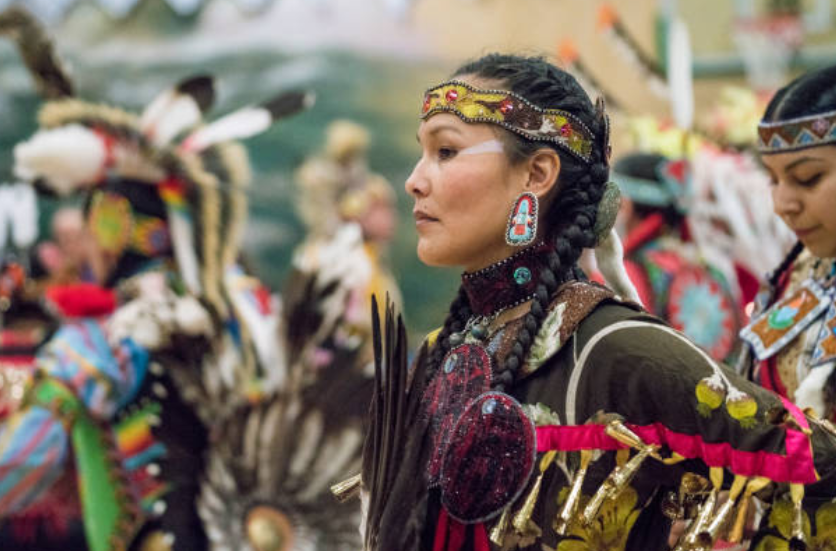National Day of Truth and Reconciliation
(Photo Credit: Libro Credit Union Supporting Indigenous-Owned Small Businesses.)
The International Day of the World’s Indigenous People on August 9th pays tribute to the indigenous communities of the world. The latest data reveals 370 to 500 million indigenous people currently living in 90 countries – each having their own set of unique languages, traditions, cultures and governing systems.
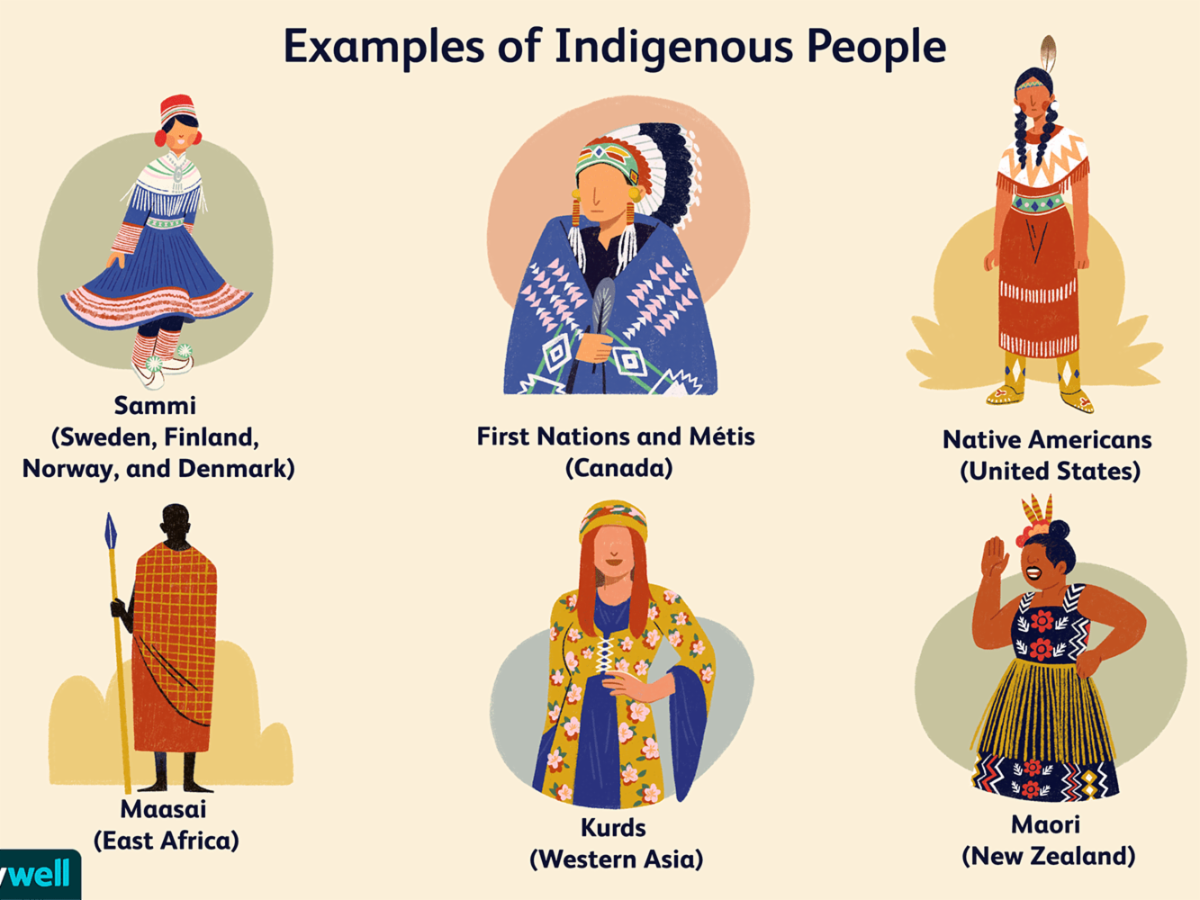
Example of Indigenous People
(Photo Credit: Verywellmind)
The History of International Day of the World’s Indigenous People
The first International Day of the World’s Indigenous People was officially celebrated in August 1995. August 9th was chosen as the commemorative date because that was when the first meeting of the U.N. Working Group on Indigenous Populations of the Sub-Commission on the Promotion and Protection of Human Rights was held. Every year, the day is honored by governments and organizations holding education forums and conferences to meet and discuss the social issues faced by indigenous groups worldwide.
How to observe International Day of the World’s Indigenous People
- Learn about an indigenous group – specifically groups within the Chesapeake Watershed
- Learn about an indigenous language or traditional practice
- Join the Department of Economic and Social Affairs (DESA) in organizing a virtual commemoration of the day focusing on this year’s theme: “The Role of Indigenous Women in the Preservation and Transmission of Traditional Knowledge.”
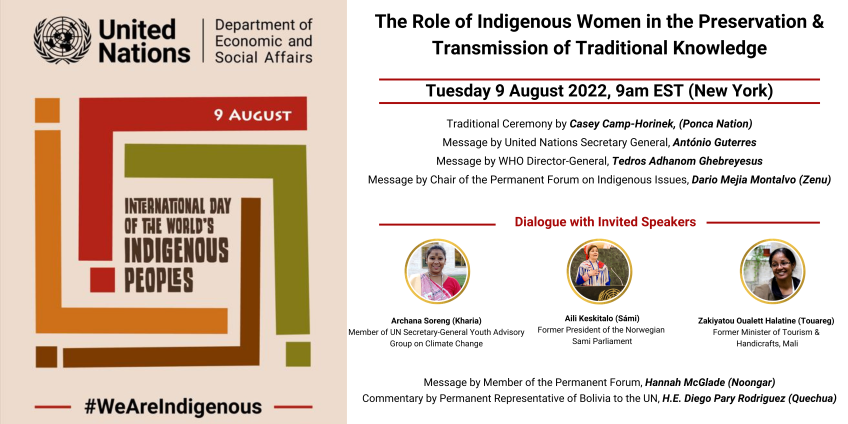
Virtual Event
(Photo Credit: United Nations)
Indigenous People of the Chesapeake
Thousands of people who identify as American Indian live in the Chesapeake region today. Some belong to state or federally-recognized tribes, others belong to groups with shared heritage and culture.
The current recognized tribes of the Commonwealth of Virginia include:
- Chickahominy Indian Tribe
- Chickahominy Indians Eastern Division
- Mattaponi Indian Tribe
- Monacan Indian Nation
- Nansemond Indian Nation
- Pamunkey Indian Tribe
- Rappahannock Indian Tribe
- Upper Mattaponi Indian Tribe
- Cheroenhaka Nottoway Indian Tribe
- Nottoway Indian Tribe of Virginia
- Patawomeck Indian Tribe of Virginia
The State of Maryland has formally recognized the following indigenous tribes in the state:
- Accohannock Indian Tribe
- Assateague Peoples Tribe
- Nause-Waiwash Band of Indians
- Piscataway Conoy Confederacy and Sub-Tribes
- Cedarville Band of Piscataway Indians
- Piscataway Indian Nation
- Pocomoke Indian Nation
- Youghiogheny River Band of Shawnee Indian
In Delaware, the state has formally recognized two Native American tribes:
- Lenape Indian Tribe of Delaware
- Nanticoke Indian Association
In New York, the state recognized tribes include:
- Cayuga Nation
- Oneida Nation of New York
- Onondaga Nation
- Saint Regis Mohawk Tribe
- Seneca Nation of Indians
- Shinnecok Indian Nation
- Tonawanda Band of Seneca
- Tuscarora Nation of New York
Currently there are no state or federally recognized tribes in Pennsylvania, although the most recent census reports a population of more than 12,000. Today, even as government and public organizations seek to preserve the history of Indigenous peoples and support future generations, challenges persist. In the Chesapeake Bay watershed, it is crucial that we honor the history of indigenous peoples and celebrate their culture as we do all members of the region.
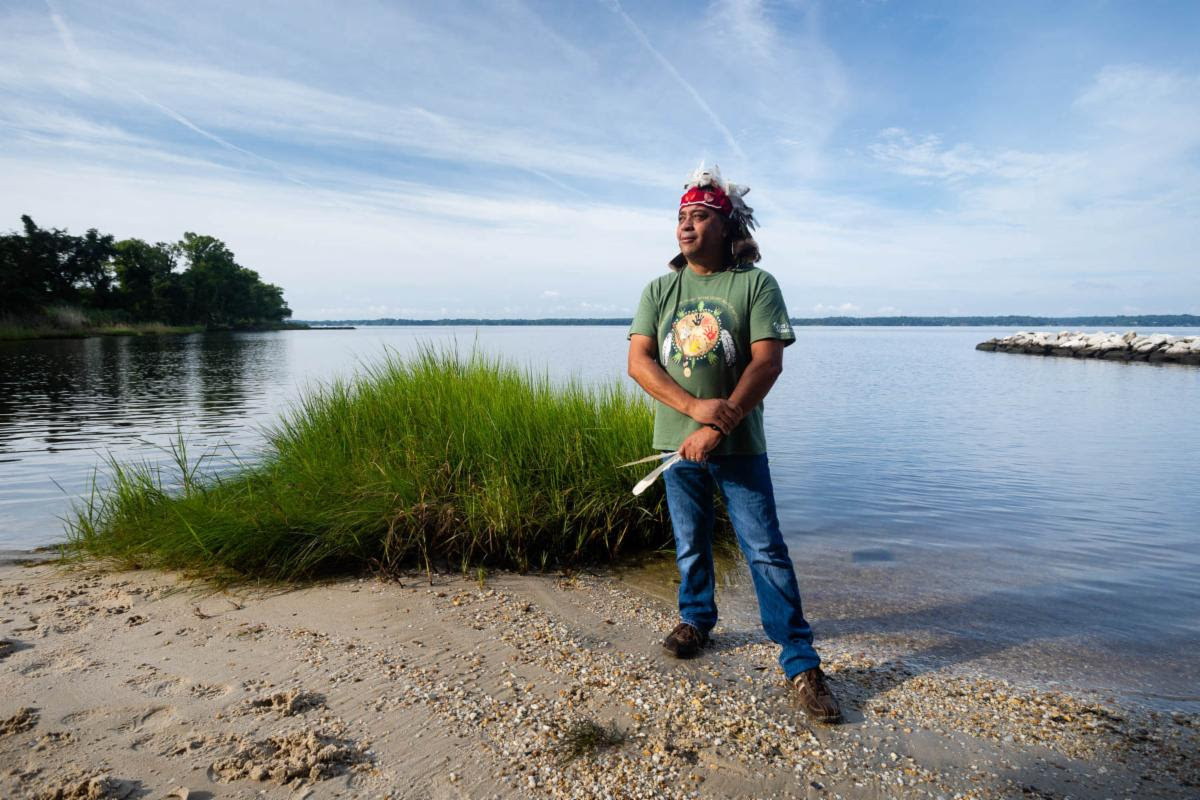
Francis Gray, a former Councilman of the Piscataway Conoy, stands on the bank of the Patuxent River in Calvert County, Md.
(Photo Credit: Will Parson/Chesapeake Bay Program.)
Leaders in Biodiversity and Conservation
Many indigenous people’s special bond and connection with nature have also led to the protection of the environment overall. Recent research demonstrates that while the world’s 370 million indigenous peoples make up less than five percent of the total human population, they manage over 25 percent of the world’s land surface and support about 80 percent of the global biodiversity.
Secretary Deb Haaland made history when she became the first Native American to serve as a cabinet secretary. She is a member of the Pueblo of Laguna and a 35th generation New Mexican. Throughout her career in public service, Secretary Haaland has broken barriers and opened the doors of opportunity for future generations. She is also one of the first Native American women to serve in Congress, where she focused on environmental justice, climate change, missing and murdered indigenous women and family-friendly policies.
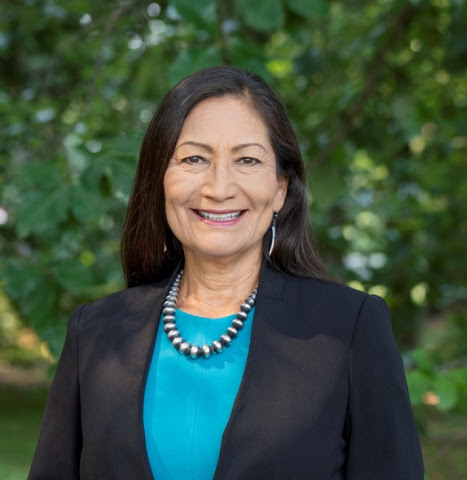
Deb Haaland
Secretary Deb Haaland made history when she became the first Native American to serve as a cabinet secretary. She is a member of the Pueblo of Laguna and a 35th generation New Mexican. Throughout her career in public service, Secretary Haaland has broken barriers and opened the doors of opportunity for future generations. She is also one of the first Native American women to serve in Congress, where she focused on environmental justice, climate change, missing and murdered indigenous women and family-friendly policies.
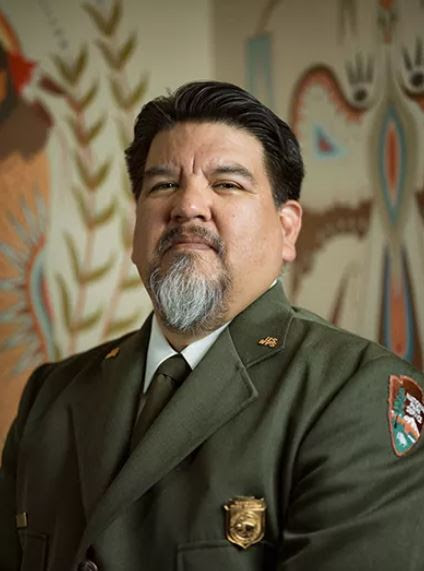
Charles F. Sams III
19th National Park Service Director, Charles F. Sams III is Cayuse and Walla Walla and is an enrolled member of the Confederated Tribes of the Umatilla Indian Reservation in Northeast Oregon, where he grew up. He also has blood ties to the Cocopah Tribe and Yankton Sioux of Fort Peck. For 30 years, Sams has worked in tribal and state government with an emphasis for land preservation for this and future generations.
Several agencies, nonprofits and volunteer groups protect, preserve and share the stories of our country’s histories and cultures, including those of the first peoples that inhabited this land and continue to do so. These sites are multi-faceted full of histories and cultures that are an essential part of our collective American story. We invite you to explore, seek knowledge and develop your own connections to the land and to its peoples.
Lightning Update is a regular communication of the Chesapeake Conservation Partnership. Any opinions expressed are those of the authors and do not necessarily reflect positions of the Partnership or member organizations.
To share a success story, news, or important event, send your information to:
Support for the Chesapeake Conservation Partnership is provided by:
National Park Service Chesapeake
EPA Chesapeake Bay Program
USDA Forest Service
Pennsylvania Department of Conservation & Natural Resources
Maryland Department of Natural Resources
Virginia Outdoors Foundation
US Fish & Wildlife Service
Chesapeake Conservancy
The Chesapeake Conservation Partnership is co-convened by:




